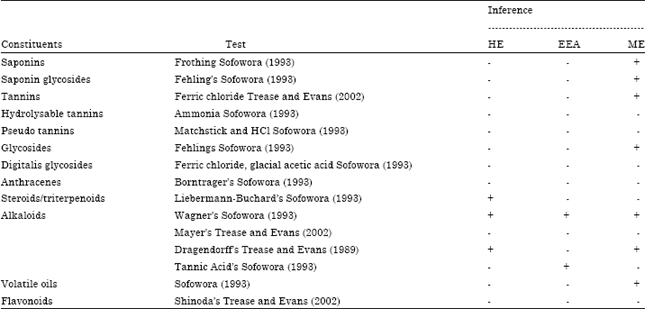Research Article
Phytochemical Screening and Preliminary TLC Characterization of Alkaloids in Sabicea brevies Root
Department of Industrial Chemistry, Enugu State University of Science and Technology, Enugu P.M.B. 01660, Enugu, Nigeria
R.C. Ehiri
Department of Industrial Chemistry, Ebonyi State University, Abakaliki P.M.B. 053, Abakaliki, Nigeria
S.P.I. Ogah
Department of Industrial Chemistry, Ebonyi State University, Abakaliki P.M.B. 053, Abakaliki, Nigeria










